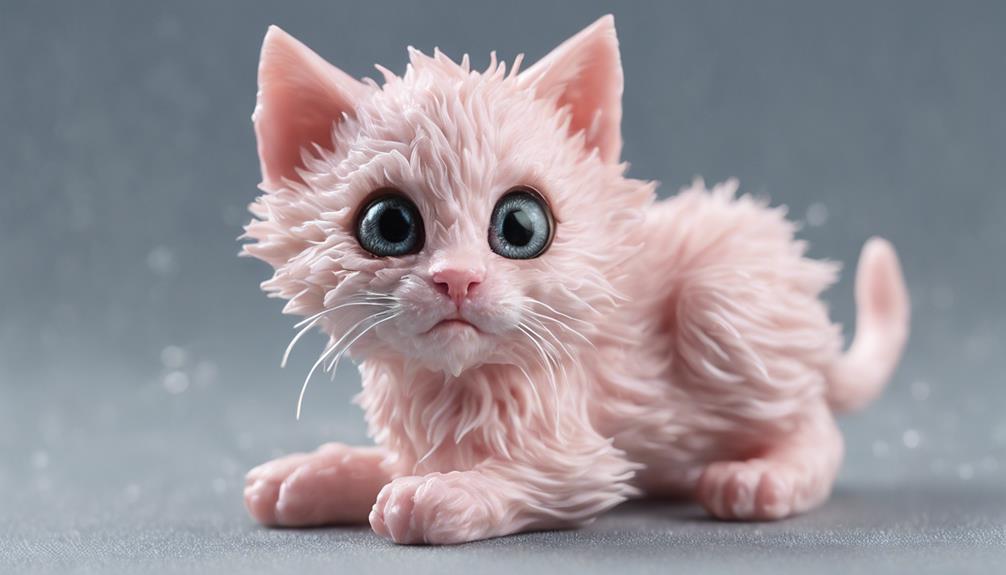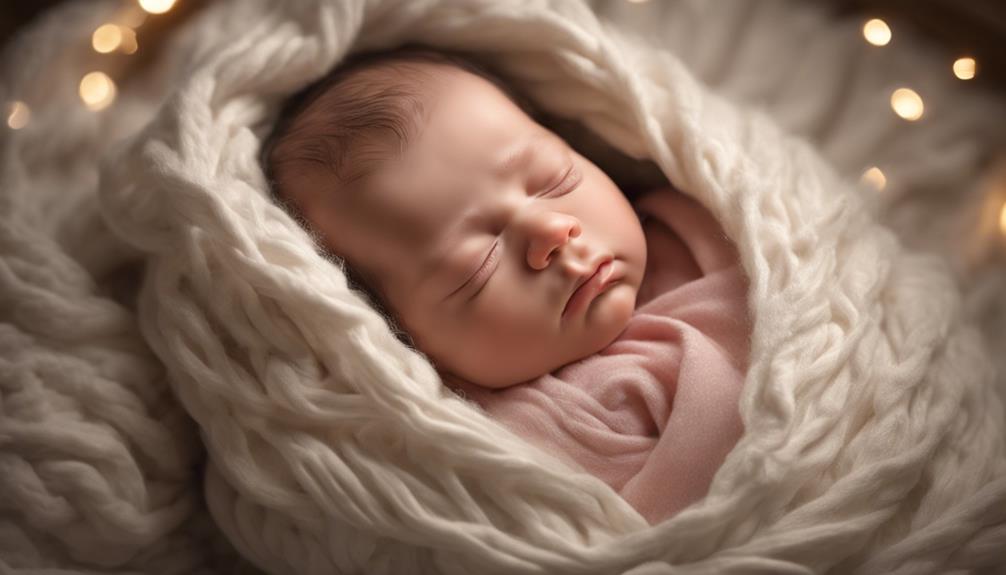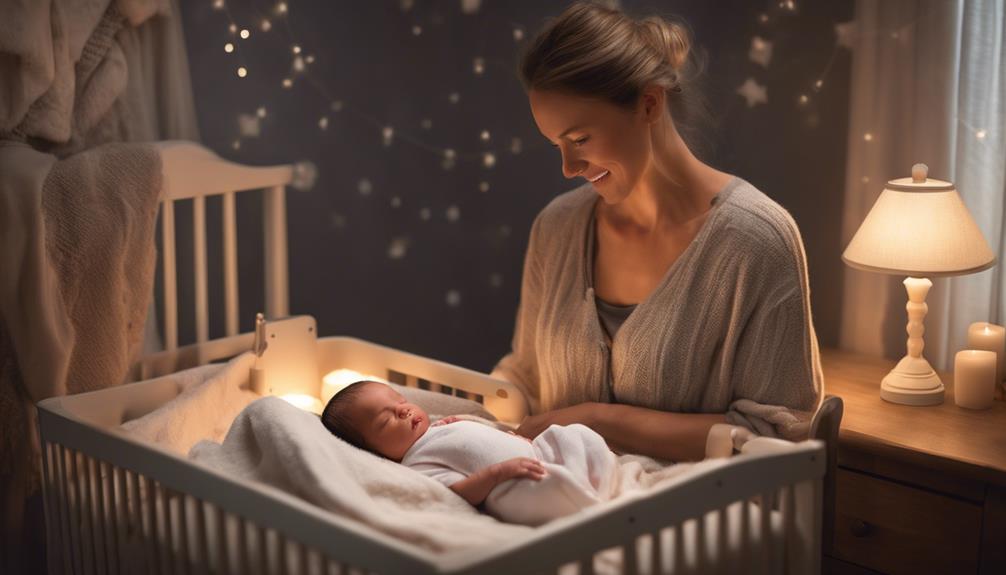When considering how many layers a newborn should sleep in for safety, we must prioritize both warmth and comfort. Ensuring the right balance is essential for a peaceful night's sleep, but how do we determine the perfect amount?
Factors such as room temperature and the baby's own sleep attire come into play. By following recommended guidelines and staying attuned to the baby's cues, we can create a sleep environment that promotes safety and well-being.
Let's explore the best practices for dressing newborns to sleep soundly through the night.
Key Takeaways
- Add one extra layer compared to adults for newborn sleep comfort and warmth
- Choose breathable fabrics like cotton for newborn sleep attire
- Monitor baby's warmth and adjust layers based on room temperature
- Dress newborns in appropriate, snug clothing to prevent overheating and ensure safety
Recommended Layers for Newborn Sleep
When dressing newborns for sleep, it's important to add one additional layer compared to what an adult would wear in the same temperature to make sure ideal comfort and warmth. This extra layer can be a thin long sleeve bodysuit or a lightweight swaddle to keep the newborn cozy without the risk of overheating. Opting for breathable fabrics like cotton is vital to help regulate the baby's body temperature during sleep.
A newborn sleep sack is also a great option as it provides warmth while allowing airflow, reducing the chances of the baby getting too hot.
Monitoring the baby for signs of being too hot or too cold is essential. Signs of overheating include sweating, flushed skin, and feeling hot to the touch. Conversely, signs of being too cold include cool extremities and fussiness. By dressing newborns in the right amount of layers and choosing appropriate fabrics, we can guarantee a comfortable and safe sleep environment for our little ones.
Factors Influencing Newborn Sleep Layers
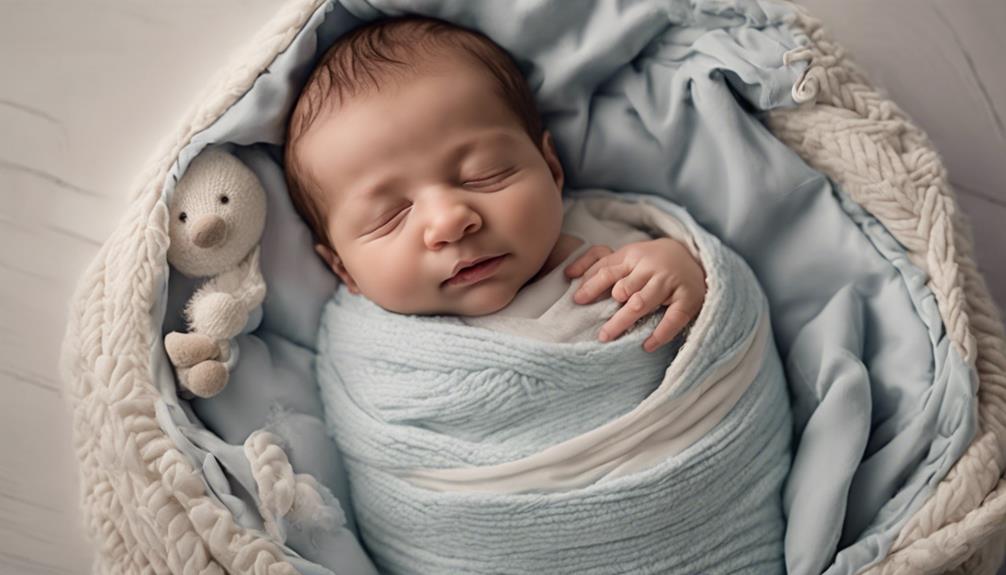
Considering the factors that influence the appropriate layers for newborn sleep is essential for ensuring their comfort and safety. When preparing your baby for sleep, it's important to take into account the room temperature, choose suitable sleepwear, and monitor their comfort to prevent overheating. Dressing your baby in the right number of layers can help maintain their body temperature. Here is a table summarizing the key factors influencing newborn sleep layers:
| Factors | Description | Importance |
|---|---|---|
| Room Temperature | Adjust the layers based on the room temperature to keep baby cozy | High |
| Dress Your Baby | Choose lightweight, breathable fabrics for comfortable sleepwear | Medium |
| Monitor Comfort | Check your baby's warmth by feeling their neck or chest | High |
Safety Guidelines for Newborn Sleep Attire
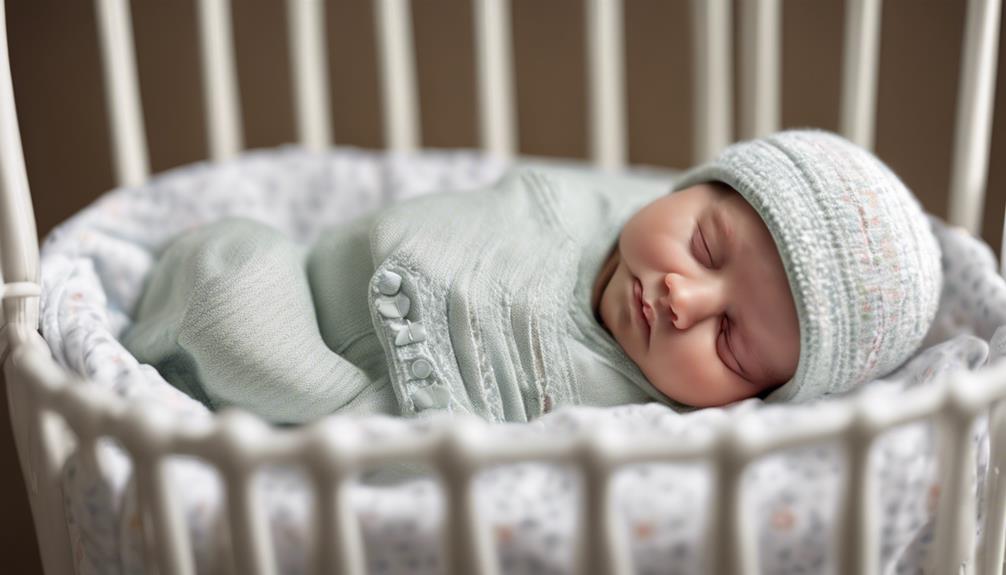
To guarantee newborns sleep safely and comfortably, it's recommended to dress them in appropriate layers of lightweight, breathable fabrics that allow for proper movement and circulation. Newborns should be dressed in one layer more than an adult would wear in the same room temperature to make sure they stay warm without overheating.
It's important to avoid overdressing newborns to reduce the risk of discomfort and potential overheating during sleep. Opt for lightweight fabrics that help regulate their body temperature and promote a cozy sleep environment. When choosing sleep attire for newborns, make sure that it's snug but not too tight, allowing them to move comfortably while maintaining circulation.
Following these safety guidelines for newborn sleep attire is essential to adhere to safe sleep practices and reduce the risk of suffocation hazards. Remember to avoid loose blankets, pillows, or clothing that could pose a danger to newborns during sleep.
Adjusting Layers Based on Room Temperature
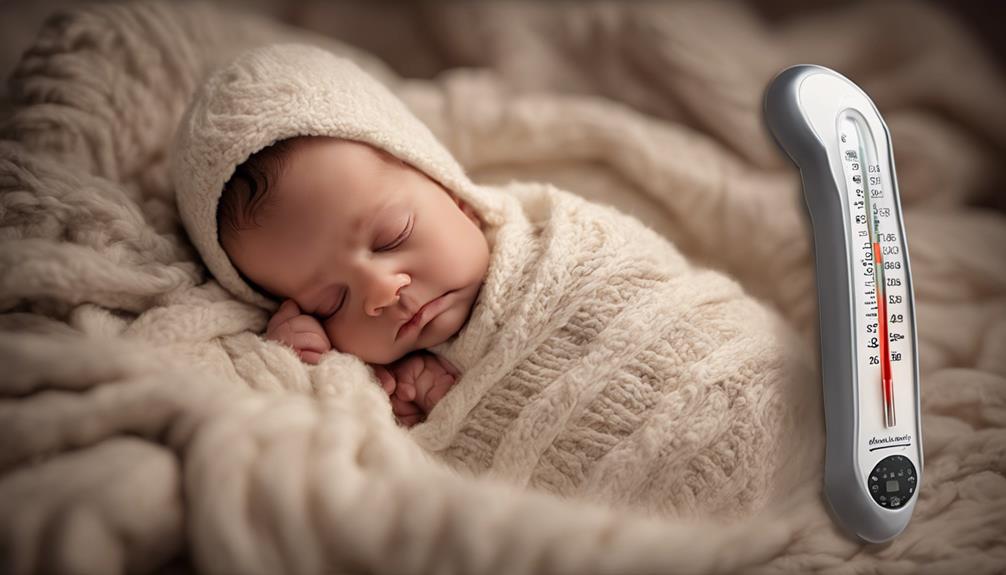
Adjusting your newborn's layers based on the room temperature is essential for ensuring their comfort and safety during sleep. It's critical to maintain an ideal sleep environment by adapting the number of layers your baby wears according to the ambient temperature. To guide you in this process, consider the following recommendations:
| Temperature | Recommended Clothing |
|---|---|
| Warmer nights | Lightweight swaddle or sleep sack |
| Average nights | One more layer than what you would wear |
| Colder nights | Fleece-footed pajamas and a sleep sack |
Tips for Dressing Newborns for Sleep
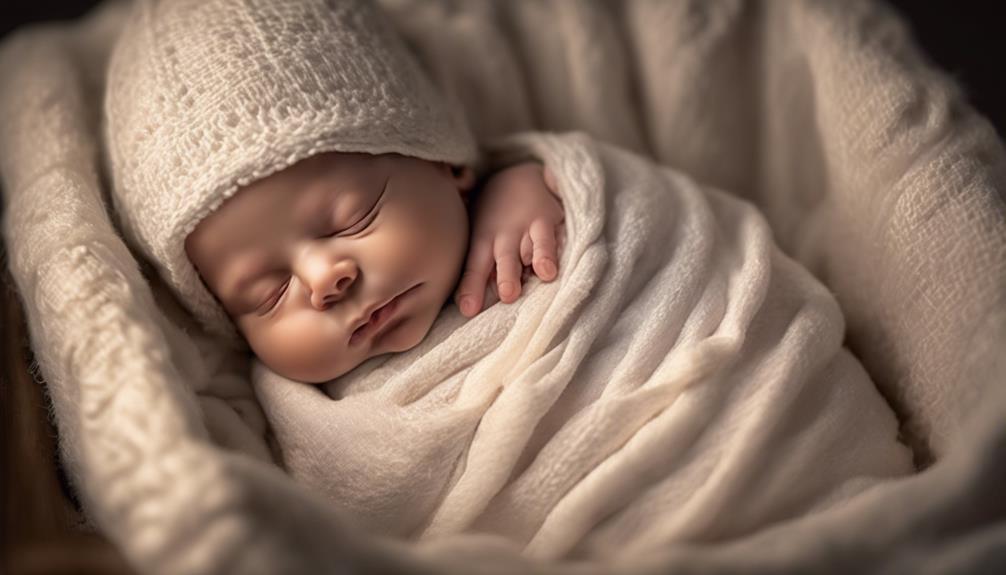
When preparing newborns for sleep, it's important to dress them in clothing similar to what adults would wear in the same environment for best comfort and safety. Here are some tips for dressing newborns to make sure they've the best sleep:
- Assess the Room Temperature: Dress your baby in the same number of layers that you'd feel comfortable in for that room temperature.
- Use Light, Breathable Fabrics: Opt for cotton or other natural fibers to help regulate your baby's body temperature and prevent overheating.
- Consider a Wearable Blanket: Instead of loose blankets, consider using a wearable blanket to keep your baby warm without the risk of suffocation.
- Avoid Overdressing: Remember the 'assess, don't obsess' mantra to prevent your baby from feeling too warm during sleep.
- Consult the American Academy of Pediatrics: Follow their guidelines to make sure you aren't overdressing your baby for safety and best sleep quality.
If you have any questions or concerns about how to dress your baby for sleep, don't hesitate to seek advice from your pediatrician.
Conclusion
To summarize, dressing a newborn for sleep involves considering room temperature, caregiver's sleep attire, and the baby's comfort.
It's important to layer clothing appropriately and adjust based on signs of overheating or being too cold.
Remember, 'it's better to be safe than sorry' when it comes to ensuring your baby's safety and comfort during sleep.
Consult your pediatrician for any concerns or questions regarding newborn sleep attire.

